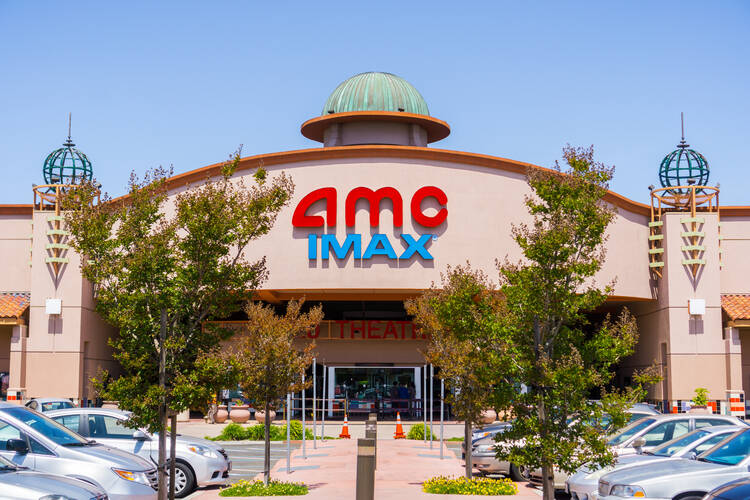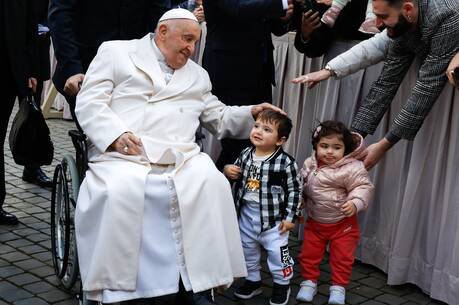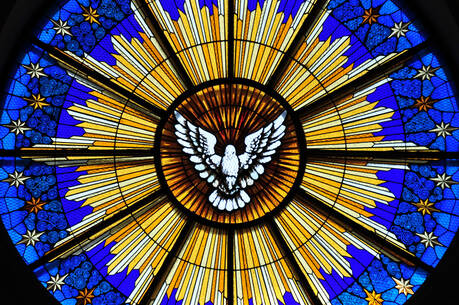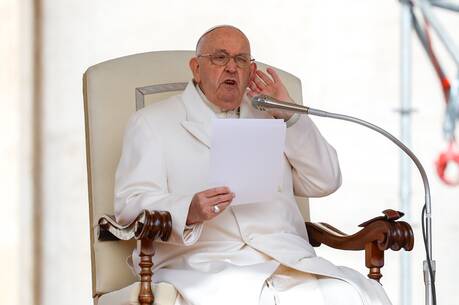I used to think it was arrogant of the church not explicitly to include symbols from popular media culture in liturgy. Such an exclusion seemed like a denial of the lived reality of younger generations, a dismissal of a significant domain of our spiritual formation (and deformation). The influence of popular media culture is surely one pervasive sign of our postmodern times. CD’s, movies, music videos, DVD’s, sport, cable television, street and high fashion and the Internetit is almost impossible to be an American, especially a younger-generation American, and not take up a relationshipwhether in sympathy or reactionto these different aspects of popular media culture.
In my book Virtual Faith, I recommended that churches make use of new forms of media in liturgy, such as music video, borrowing some aesthetic and production insights from stations like MTV. I suggested that a Madonna video be played with superimposed quotations from Teresa of Avila scrolling slowly across the bottom of the screen, playing out both the resonances and the tensions in their sacramental worldviews. In the last few years, however, some experiments with media-savvy worship have changed my thinking.
Here are three typical examples. At a Midwestern university, I preached at an ecumenical campus ministry service where the altar was a television set surrounded by candles. I played in a rock band at a very, very low-church Protestant service that featured a homily built around The Simpsons and a free-form communal use of Crayola markers. I preached at a liturgy during which an introductory reflection was read comparing the basic theological commitments of Star Wars to that of Jesus in the Gospels. Each of these experiments left a disappointing aftertaste. Instead of catalyzing the carbonation of spiritual electricity that I had anticipatedmultiplying opportunities for an appropriation of the Holy Spiriteach was liturgically a flat soda. In each case, the worship space felt cheapened instead of elevated, both during the service and upon later reflection.
And to my surprise, when I preach to communities that are heavily youth- and young adult-oriented, I find that I often do not want to do popular culture exegesis. I make few explicit references to media culture, feeling that to do so would quickly thin out the atmosphere and bind my preaching too immediately to an ephemeral image, melody or scene. Instead, I want to preach something that can be used by the hearer to traverse diverse images, melodies and scenes in and out of their lives in popular media culture.
What has changed? I still believe that the church can do better in making positive and creative use of popular media culture. But instead of assigning a privileged place to the liturgy’s creative and explicit transfiguration of media symbols, I have come to see value in the liturgy as a retreat from media culture itself.
It is useful to remember that the American Catholic liturgy, like all liturgy, is culturally rooted. This means that it is always practiced (explicitly and implicitly) in relation to the signs of the timesthe symbols of the cultures in which liturgy takes place, whether local, national or global. In order for Catholic liturgy in the United States to be more adequately culturally embedded, and thus responsive to the influence of popular media culture, I propose two primary liturgical forms, two ideal types for liturgy today.
The first type is liturgy as an electronic media laboratory. Liturgy here makes direct use of popular media culture symbols, for the sake of rendering the sin and grace in media culture more explicit. This type employs such content as movie scenes, music video clips, selections from popular rock, rap or country music, or slides of media images. It may also creatively make use of contemporary media technology like video cameras, sophisticated sound systems, clothing fashions, computers or electric instruments.
One full-bodied example of this type would be something like the rave Masses that have been tried in England and elsewhere. At these and similar liturgies, video screens, sophisticated lighting, beat-heavy club or atmospheric rock music and dancing are all central to worship. But this, of course, cannot be the norm for most U.S. churches, even though it can spark liturgical imagination.
A much milder example would be the use of a movie clip to comment on or be commented on by the Gospel. One could use, for example, the scene from the recent movie Contact, in which Jodie Foster’s character, the scientist Dr. Arroway, is strapped into a high-tech pod to travel to another dimension, to visit a realm where her dead father still lives. In the chaos of a countdown during which the launch pad nearly disintegratesthe pod shaking with apocalyptic turbulence, her most cherished beliefs and her very life at stakeshe chants to mission control, and to herself, I’m O.K. to go, I’m O.K. to go. O.K. to go.
This scene may well illustrate what it looks like to risk everything completely on faith, or to accept in radical trust the newness of an aborning life stage. It may also symbolize a readiness to die gracefully by releasing oneself into the mysterious embrace of a loving God, to whom one may courageously whisper, I’m O.K. to go. I did not invent this latter interpretation; it was suggested to me by a young Catholic who worked in an AIDS hospice after he attended a worship service in which we employed this video clip.
Liturgy as media laboratory is not unknown to Rome. On May 1, 2000, Pope John Paul II led a Jubilee of the Workers. In a huge field in suburban Rome, he presided over a Mass that was combined with a rock concert. Approximately 200,000 young people received the Eucharist and listened to the artists Lou Reed, Alanis Morissette and the Eurythmics. This form of popular culture was explicitly endorsed by Bishop Fernando Charrier, who commented, Rock music, when it is performed by great artists, is stupendous. There is no diabolical rock; if anything, there are diabolical people.
This notably strong endorsement of rock music was linked to advocacy of third world debt relief, not only from the stage but from the altar. The Bishop of Rome declared: All must work so that the economic system in which we live does not upset the fundamental order of the priority of work over capital. Globalization is a reality present today in every area of human life, but it is a reality that must be managed wisely. Solidarity, too, must be globalized. This was a fine example of liturgy as media lab: enjoyment of the symbols of popular culture were connected to economic justice. The symbols were recontextualized in service of the Gospel.
Liturgy as media lab has much to recommend it. Its most powerful claim is that it re-situates popular culture images in relation to the Gospel, modeling for churchgoers the spiritual interpretation of media culture in everyday life. But there are some negative qualities in this type, such as leading the church to be reactive to media culture instead of being a proactive sponsor of local art and culture. And there are other reasons to hesitate: serious money is required for regular technological upgrades, not to mention constant staff training; and there is the ever-present danger of associating authentic worship with high stimulation. The most basic problem, however seems to be whether the church can really use the symbols of the media culture without being used by those symbols. Did the incorporation of the television set, The Simpsons and Star Warsor Alanishelp people discern sin and grace better in everyday life, or did it merely and cheaply baptize these media? If the results were mixedas is likelywhen is it wiser simply to ignore or reject rather than liturgically recontextualize popular media culture?
While many churches are experimenting with this form, the Catholic Church is, in most places, and for a variety of reasons, not ready to do this well. This is chiefly a matter of expense and a lack of a critical mass of trained people to carry out such a liturgy effectively. So I propose a second type, for which we may be better prepared: liturgy as ironic sanctuary.
By sanctuary, I mean the liturgical space as a worshipful haven, safe from the symbolic order of popular media culture, liturgy as the place of media fasting; sanctuary, then, as the place that offers a countercultural symbolic order to that of popular media culture. The essential element here would be a pedagogy of the awe and grandeur of God as mystery present in the glorious and suffering mystery of human lifeagainst the temptations to modes of life that are often overactive, overstimulated and self-absorbed in media culture.
I recall a recent Mass at Holy Cross Monastery in Chicago. A monk stands up to read the Gospel, walking deliberately and unhurriedly to the ambo. He takes the incense from the sacristan, steaming in passionate swirls. He censes the Lectionary reverently and hands the censer to the sacristan, a fellow monk.
As he begins to chant the story of the Magi, the sacristan, several steps behind him, gently swings the censer to the right and to the left, with only the slightest movement of his strong wrist. As the censer arches to its uppermost point on each side, the slack chain snaps into place with a brief, sharp metallic ching. John’s Gospel is chanted while the ching ching ching swings like the lazy arm of a grandfather clock behind him, keeping time. But what time is it keeping?
The metronome effect nearly fractures me, framing the Gospel visually, audibly and olfactorily at the convergence of temporality and atemporality. The Gospel glides along its canal of unhurried chant, while taking place firmly within the time measured out by the swinging incense, and at the same time rising above time in the meditative state aroused by the rhythmic timekeeping itself. In this image, I am shocked into recognizing a symbol for what the liturgy could become in the midst of media culture today: a school for the imagination in the re-temporalizing, the re-rhythming of everyday life.
But I said that this second type is an ironic sanctuary. What do I mean by ironic? I don’t mean that the priest winks coyly throughout the liturgy. I mean a liturgy that does not forget that it is always culturally embedded. To be an ironic sanctuary simply means that we take seriously the fact that liturgy always has something to learn from the surrounding cultures, as well as something to teach them. It means that the safe haven from the media culture is never a pure, finished, already complete haven.
But if Catholicism is more prepared to engage in this second form of liturgy, it is critical that adult religious education thoroughly complement liturgy in the life of adult Catholics. If the liturgy is to be ironic sanctuary, then the task of a more direct Christian engagement with popular media culture needs to be concretely addressed in adult education at the local churches. Thus the lack of young adult religious education in general and adult education in particular is today, more than ever, a scandal in the church.
A generation ago, Karl Rahner sensed what was at stake in decisions about the shape of liturgy: a more mature relationship to God and to oneself. He thought that the church could still help younger generations to learn that what they have experienced in their transcendence as a spiritual and free person at its deepest level really has to do with God. And he saw that the liturgy was necessary in helping people to experience thatin everyday lifewe have constantly and unavoidably been dealing with God all along. But, he said, how to do this is the real question.
I have attempted here to propose two possibilities for today, in response to Rahner’s question. It is a question that yet stands before the church within media culture.








